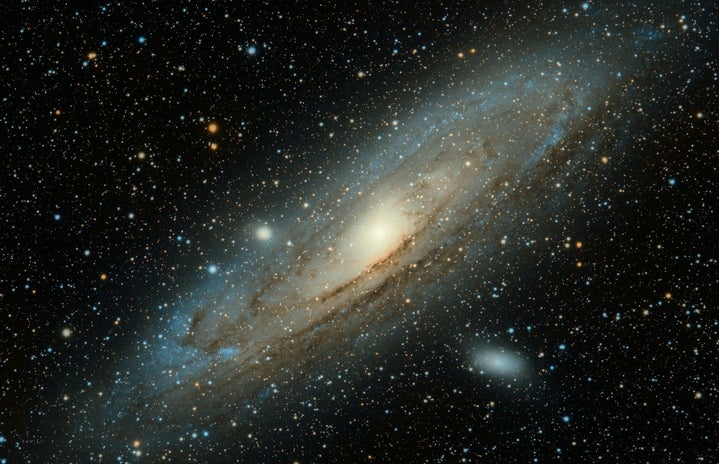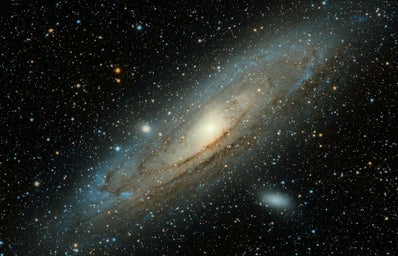Welcome travelers! This is a comprehensive guide on vacationing do’s and don’ts when traveling to the different planets in our solar system. Before we jump into your briefing, let’s establish the scientific reasoning behind this information.
Each planet’s guide will reference how long your flight would be to the planet. This number has been calculated based on the fastest speed humans have safely traveled – 24,790 miles per hour relative to Earth – and the average distances to the planets. Since the averages cannot account for the exact conditions of your flight, please respect these calculations as estimates.
Now that we have all the scientific aspects down, it is time to examine how you should most effectively navigate all parts of this guide. Each segment will give a brief description of the planet. This will include a packing list, as well as notable attractions to see while you are there.
The bolded words are defined in the glossary at the end of the guide. Keeping in mind that space is fun and exciting, I sincerely advise you to enjoy this series as a brief vacationing guide to the planets of the solar system.
Mercury: the Messenger
Mercury is the closest planet to the Sun but not to Earth. Being an average of forty-eight million miles away, it would take about eighty-one days for a ship traveling at the fastest aeronautic speeds achieved by mankind. Mercury is named after the Roman messenger god, due to its quick revolutions around the Sun.
Our smallest planet in the solar system has no moons and no atmosphere. But don’t worry, for there are still reasons to explore this planet! For starters, there is a high probability that you as a traveler would learn information about Mercury that even NASA doesn’t have. This is because Mercury is the least explored of the four terrestrial planets. If you’ve been waiting for your moment in the spotlight, Mercury might give you just that,space discoveries get plenty of press.
Press aside, the sunsets and sunrises on Mercury would be grander than any spotlight or fame on Earth. Due to the elliptical orbit that Mercury travels in, you could stand in one location and see the sun rise, set, and rise again over a short period of time.
For a planet as close to the Sun as Mercury is, it’s not as warm as you’d think. . The temperature range is unbelievable. Yes, Mercury can get fairly warm, reaching 750-800 degrees Fahrenheit, but the temperatures can get down to -330 degrees Fahrenheit. So, when packing for Mercury, bring your sunscreen, but don’t forget that the planet isn’t always warm. Mittens and sunscreen would both be highly recommended.
Equally as important are the oxygen tanks. While you would need them for all planets, Mercury has no atmosphere. If there’s any planet you won’t be able to breathe on, it’s this one. I think you’re about ready for the trip now – just don’t forget your oxygen and mittens!
Venus: the Truth About Earth’s Twin
Venus is commonly compared to Earth due to their striking similarities in composition, mass, and size, but they couldn’t be more different. After making the forty-one million-mile, 69-day trip to Venus, you will understand the irony in the fact that Venus is named for the Roman goddess of love and beauty. Venus isn’t simply Earth’s twin; it’s Earth’s evil twin.
Suit up in your special acid-proof, heat-compatible suits, because Venus rains sulfuric acid and reaches the highest temperatures in the entire solar system. Even though Venus is farther from the Sun than Mercury, its thick atmosphere traps heat, in a process known here on Earth as the greenhouse effect.
The surface temperature is high enough to melt lead. As a traveler, you need to come prepared with proper gear – if your internal body temperature reaches close to one-hundred degrees Fahrenheit, your insides would melt. This is not a joke. With that being said, telling you to pack sunglasses and sunscreen would be a ridiculous understatement.
Yes, be cautious, but don’t let Venus’s fiery persona scare you away. There is a lot of intrigue in Venus’s past. Astronomers theorize that Venus once had water and may have even been hospitable. Over billions of years, organisms may have adapted to that environment. This is not likely, but as a traveler, you could explore this question on a more practical level. At the same time, Venus hosts thousands of volcanoes and deformed mountains that would provide views Earth never could.
Venus might be a risky trip. There aren’t many ways to get around the dangers of acidic rain, poisonous air, and almost constant hurricanes, so as travelers, make sure you are informed before you sign up for this trip.
Stay tuned for more installments in the Travel Guide Through the Solar System series to learn about vacationing to the rest of our neighboring planets!
**
Glossary (Paraphrased Dictionary Definitions)
Elliptical orbit: Being in the form of an ellipse (an oval shape).
Greenhouse effect: Trapping the sun’s heat in a planet’s lower atmosphere due to an atmosphere weakened and therefore more susceptible to radiation.
Sulfuric Acid: A strong acid, which in concentrated form is oily, dense, and corrosive.
Terrestrial Planet: A planet composed of mostly rocks and metals.
**
Sources


